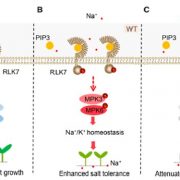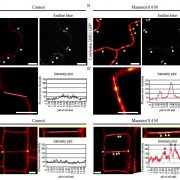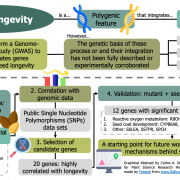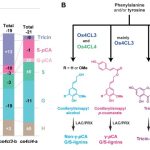Tobacco leaf tissue rapidly detoxifies direct salt loads without activation of calcium and SOS signaling (New Phytol)
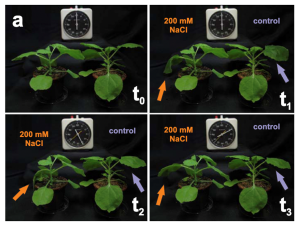 Salinity stress is one of the primary abiotic causes of crop loss worldwide. In roots, the early response to high salt levels is coordinated largely via the well characterized salt-overly sensitive (SOS) pathway, which is dependent on Ca2+ signaling. However, how plants cope with elevated salt levels in leaves is less clear. Here, Graus and Li et al. infiltrated salt into leaves of Nicotiana benthamiana to study this aspect of the salinity response. Treatment with 200mM NaCl resulted in immediate loss of turgor, reflected by a gradual down turning of leaves. However, this turgor loss was short lived, with leaves returning to their original positions within 150 minutes of treatment. This recovery cycle was also observed in photosynthesis performance, with the initial reduction in photosynthetic rates resolving in a similar timespan. Using qPCR, the researchers also showed that there are no transcriptional changes in ABA or SOS signaling pathways, or proline synthesis pathways during this NaCl treatment. By using the Ca2+ sensor GCaMP3 and the Ca2+ channel blocker lanthanum chloride, the group also showed that unlike in roots, the leaf response to salinity stress is not dependent on Ca2+ signaling. Finally, the group overexpressed the cation/H+ transporter AtNHX1, revealing that it is also responsible for the salinity response in leaves, although unlike in roots it is not regulated by cytosolic Ca2+ levels. (Summary by Rory Burke @rorby95) New Phytol. 10.1111/nph.18501
Salinity stress is one of the primary abiotic causes of crop loss worldwide. In roots, the early response to high salt levels is coordinated largely via the well characterized salt-overly sensitive (SOS) pathway, which is dependent on Ca2+ signaling. However, how plants cope with elevated salt levels in leaves is less clear. Here, Graus and Li et al. infiltrated salt into leaves of Nicotiana benthamiana to study this aspect of the salinity response. Treatment with 200mM NaCl resulted in immediate loss of turgor, reflected by a gradual down turning of leaves. However, this turgor loss was short lived, with leaves returning to their original positions within 150 minutes of treatment. This recovery cycle was also observed in photosynthesis performance, with the initial reduction in photosynthetic rates resolving in a similar timespan. Using qPCR, the researchers also showed that there are no transcriptional changes in ABA or SOS signaling pathways, or proline synthesis pathways during this NaCl treatment. By using the Ca2+ sensor GCaMP3 and the Ca2+ channel blocker lanthanum chloride, the group also showed that unlike in roots, the leaf response to salinity stress is not dependent on Ca2+ signaling. Finally, the group overexpressed the cation/H+ transporter AtNHX1, revealing that it is also responsible for the salinity response in leaves, although unlike in roots it is not regulated by cytosolic Ca2+ levels. (Summary by Rory Burke @rorby95) New Phytol. 10.1111/nph.18501


